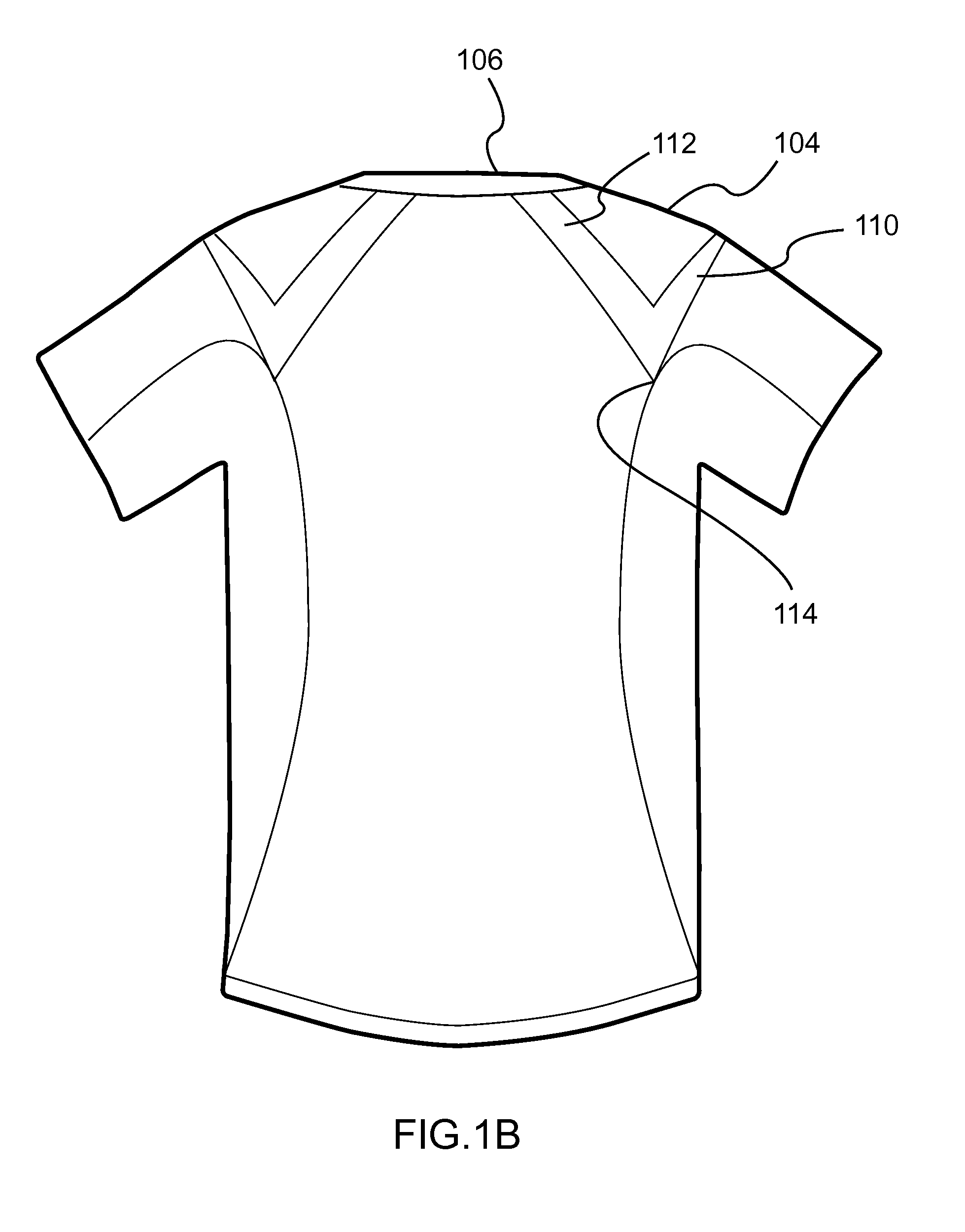Shirts and shorts having elastic and non-stretch portions and bands to provide hip and posture support
a hip and posture support, non-stretch technology, applied in the direction of protective garments, non-surgical orthopedic devices, special outerwear garments, etc., can solve the problems of increased tension, increased risk of lower extremity injury, and abnormal spinal and lower extremity kinematics of runners
- Summary
- Abstract
- Description
- Claims
- Application Information
AI Technical Summary
Benefits of technology
Problems solved by technology
Method used
Image
Examples
Embodiment Construction
[0040]The present disclosure relates generally to injury prevention and recovery. In particular, but not by way of limitation, the present disclosure relates to systems, methods and apparatuses for clothing that compensates, facilitates or trains weakening or injured muscles.
[0041]The word “exemplary” is used herein to mean “serving as an example, instance, or illustration.” Any embodiment described herein as “exemplary” is not necessarily to be construed as preferred or advantageous over other embodiments.
[0042]The embodiments of the present invention incorporating multiple materials and directions of external tensions are form-fit to the body. These embodiments are not to be confused with compression garments that may be similar in appearance yet only provide a singular, circumferential squeezing force to the body. Scientific testing in the Human Dynamics Laboratory at the University of Denver has demonstrated that an embodiment of the present invention illustrated in one or more ...
PUM
 Login to View More
Login to View More Abstract
Description
Claims
Application Information
 Login to View More
Login to View More - R&D
- Intellectual Property
- Life Sciences
- Materials
- Tech Scout
- Unparalleled Data Quality
- Higher Quality Content
- 60% Fewer Hallucinations
Browse by: Latest US Patents, China's latest patents, Technical Efficacy Thesaurus, Application Domain, Technology Topic, Popular Technical Reports.
© 2025 PatSnap. All rights reserved.Legal|Privacy policy|Modern Slavery Act Transparency Statement|Sitemap|About US| Contact US: help@patsnap.com



